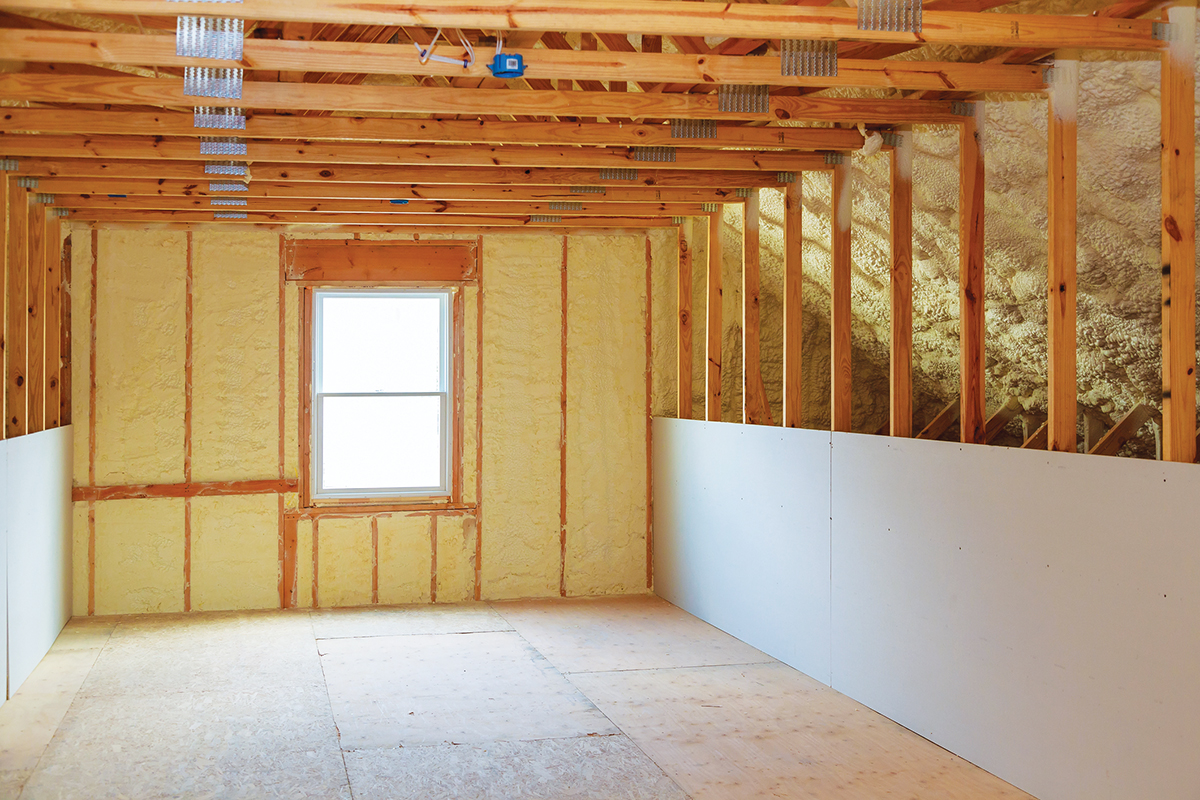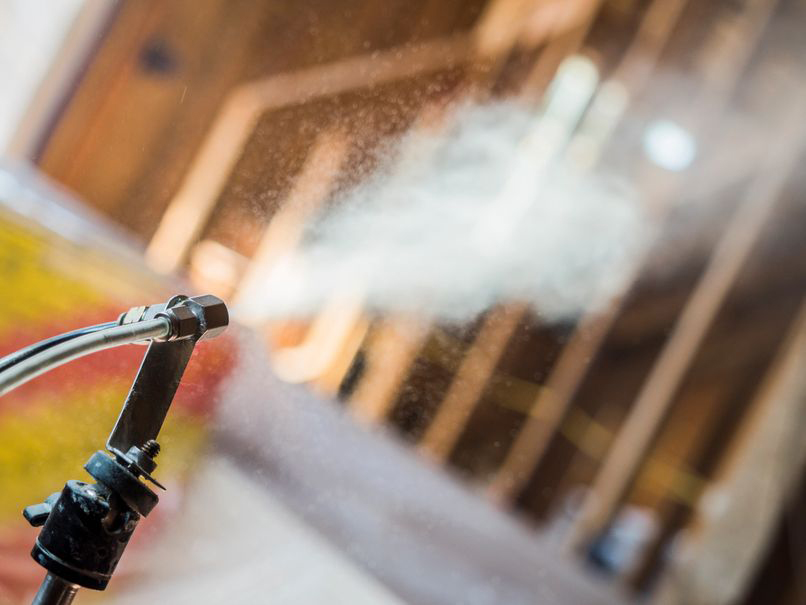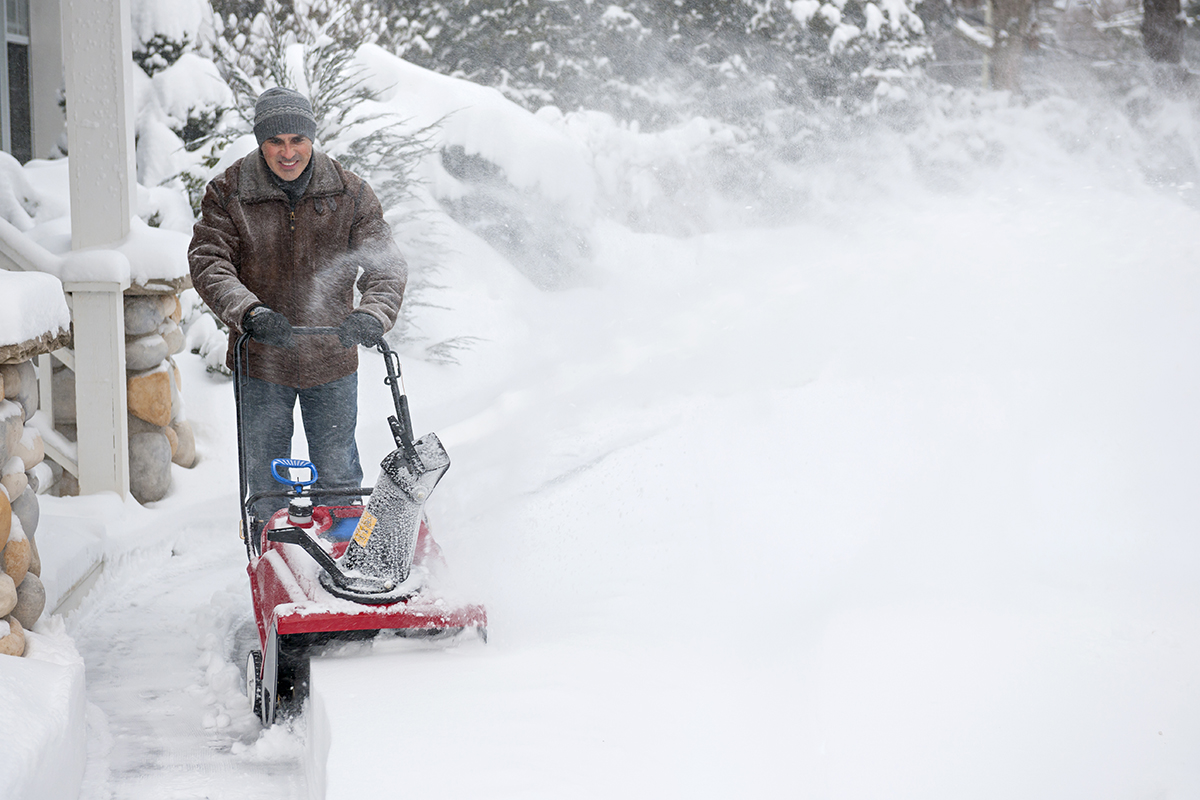WRITER | JULIE FORD
Fall is a beautiful time of year, and seeing colorful leaves signals that cooler temperatures will arrive soon. Is your home ready for winter? Having the right type and amount of insulation is key to maintaining comfortable temperatures throughout the home and managing your energy costs.
Why insulate?
Adding more insulation to what already exists is one of the best ways to raise the R-value, or thermal resistance, of warm air seeking cold air in the home. One way to raise the R-value is to increase the amount of insulation. By the laws of nature, warm air seeks cold air until the temperature is equal. Open a window of a cooled home on a hot day and the hot air will pour in until the interior and exterior temps match. Warm air also rises — upper floors of a home tend to be warmer than the lowest floor — and insulation is the heat-resistant barrier that helps keep a home warm during cold months and cool during warm months.
Types of Insulation
Loose-fill and blown-in
Fiberglass, mineral wool, and cellulose (recycled newspaper) are used in enclosed existing walls or open, new wall spaces, unfinished attic floors, and hard-to-reach places. Loose-fill and blown-in require professional application.
Advantages: Environmentally friendly.
Disadvantages: The area must be sealed before installation as moisture can cause rot and mold.
Blanket
Blanket batts and rolls are available in fiberglass (common), mineral wool, natural fibers (denim), and plastic fibers. They are used in floors and ceilings and can fit between studs, joists, and beams.
Advantages: Do-it-yourself, readily available, and inexpensive (fiberglass).
Disadvantages: R-values can be low, which means you may need a lot of it.
Foam spray – open cell and closed cell
Liquid foam insulation is sprayed below a roof, into walls, under floors, or onto attic surfaces. It starts as a liquid, turns to foam when sprayed, and hardens quickly, form-fitting to its surroundings. Open cell is flexible and expands to a 3-inch thickness; closed cell is more rigid and expands to a 1-inch thickness. Foam spray insulation requires professional application for large areas. Homeowners can purchase the product at retailers for small projects such as sealing around window frames.
Advantages: Can be double the R-value of blanket insulation; fits around obstructions or irregularly shaped areas.
Disadvantages: Closed cell is expensive; open cell should not be used below ground due to possible water absorption.
How much insulation do I need?
Homes in Michigan require more insulation than our southern neighbors, and one way to check if more insulation is needed is to head to the attic with a measuring tape. Attic insulation should have an R-value from 40 to 60. Measure the depth of the insulation material. Blanket fiberglass insulation has an R-3 value per inch, meaning you should measure about 16 inches of it to reach an acceptable R-value of 48. The Insulation Institute has a handy chart showing the amounts of insulation needed for attics, walls, cathedral ceilings, and floors for each zone in the US.
Homes built more than ten years ago will most likely need more insulation, and the attic is a great place to start for the DIY homeowner. For walls and other closed areas, contact an insulation professional. A little research and some sleuthing in the attic can go a long way to keeping your home comfortable with added insulation. Go to energy.gov and click on Fall and Winter Energy-Saving Tips and the Do-It-Yourself Home Energy Audits for more ways to save on energy bills.








